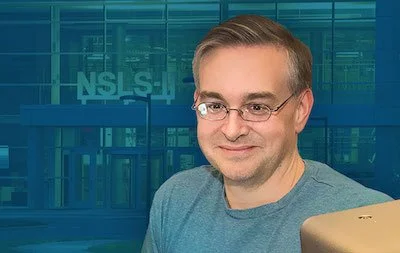Recorded Talk: Video
The CoWork webinar series is dedicated to the exploitation of the coherence properties of X-rays for advanced materials characterization, with a special focus on inverse microscopy techniques, such as Coherent Diffraction Imaging (CDI), Ptychography and Holography. It is an introduction to Coherent X-ray imaging methods to facilitate the access to advanced microscopy techniques to new users and it welcomes all researchers intrigued by the spectacular coherence properties of X-rays produced at modern synchrotron sources – of which MAX IV is a first example.
When: Thursday Oct 13, 15.30 - 16.30
Speaker: Garth Williams, Brookhaven National Laboratory (BNL), USA
Title: A new Bragg Coherent Diffractive Imaging beamline at NSLS-II
Registration:
Bio:
Garth Williams is a researcher at the NSLS-II at Brookhaven National Laboratory, NY, USA. In 2004, he received his PhD in condensed matter physics from the University of Illinois at Urbana-Champaign, IL, USA. After working at the University of Melbourne to incorporate phase structure and coherence properties into coherent diffractive imaging experiments, he joined the Coherent X-ray Imaging instrument at LCLS and became involved the problem of single partible imaging with FELs. In 2014, he moved to Brookhaven National Laboratory and is currently the scientific lead for designing and implementing a new beamline at NSLS-II, which will provide a state-of-the-art platform for coherent diffractive imaging experiments in both reflection and forward-scattering geometries.
Abstract:
Coherent diffractive imaging(CDI) is a powerful technique that can reveal both structure and deformation, when a Bragg peak from order within the sample can be observed. Because the technique does not require an imaging lens to achieve this goal, the experimental geometry of a CDI measurement does not exhibit the same restrictions as would be required to generate a typical high-resolution x-ray micrograph. Here at NSLS-II, we are building a new beamline that features a unique optical design and an extremely flexible end station. The optical design allows for exceptional control over the illumination in both providing a variable spot size and in controlling the degree of coherence. The end station features two independently positionable detectors—allowing multiple diffraction patterns in reflection, forward-scattering, and/or grazing geometries to be simultaneously collected—at variable propagation and long-working-distance optics defining the final x-ray spot on the sample. The design features of this beamline and our future plans for the instrument will be presented.
Webinar moderators
Members of the organising group.
Please contact either gerardina.carbone@maxiv.lu.se or asa.grunning@linxs.lu.se for any questions.
During our events we sometimes take photographs and short film clips to profile our activities. Please let us know if you don’t want to be in any photos/films before we start the event. Some webinars are recorded to be used for educational purposes in the LINXS website.
By registering to our events you give your permission to LINXS, according to the General Data Protection Regulation (GDPR), to register your name and e-mail address to be used for the sole purpose of distributing newsletters and communications on LINXS activities.





















